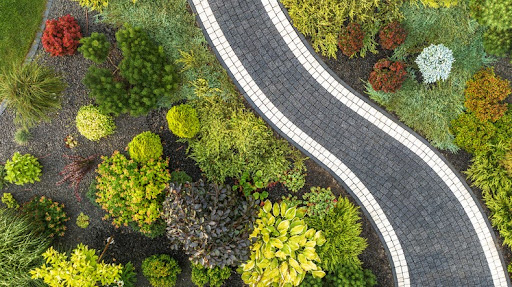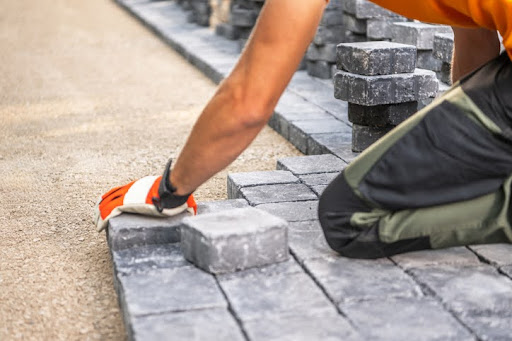Hardscaping refers to the use of non-living materials like stone, wood, concrete, and metal to create functional and aesthetically pleasing structures in outdoor spaces. It includes features such as patios, retaining walls, walkways, and fire pits, which form the backbone of landscape design by providing structure, accessibility, and usability.
The Role of Hardscaping in Landscape Design
Hardscaping is a critical component of landscaping that complements softscaping (plants, grass, and other organic elements). While softscaping adds life and color, hardscaping provides durability, organization, and functionality to outdoor spaces. Together, they create a balanced and harmonious outdoor environment.
Benefits of Hardscaping
Hardscaping offers numerous benefits that enhance the value and usability of your property:
- Enhanced Property Value:
- Well-designed hardscaping features increase curb appeal and attract potential buyers.
- Durability:
- Unlike softscaping, hardscape elements are long-lasting and require minimal maintenance.
- Extended Living Space:
- Patios, decks, and outdoor kitchens allow homeowners to enjoy outdoor living throughout the year.
- Erosion Control:
- Retaining walls and drainage systems prevent soil erosion and manage water flow effectively.
- Low Maintenance:
- Hardscaping reduces the need for constant watering, mowing, or pruning.
- Year-Round Usability:
- Features like fire pits and gazebos provide comfort regardless of the season.
Types of Hardscaping
Unique Landscaping specializes in creating hardscaping elements that combine functionality with aesthetic appeal. Here are the most popular hardscaping features:
1. Patios
- Description: Patios are flat outdoor spaces constructed using materials like pavers, concrete, or natural stone. They are perfect for dining, relaxing, or entertaining guests.
- Benefits: Easy to maintain, durable, and versatile in design.
2. Walkways and Pathways
- Description: Stone or gravel pathways provide access to different areas of your outdoor space without trampling plants or grass.
- Benefits: Enhances navigation and organizes your yard layout.
3. Outdoor Fire Pits and Fireplaces
- Description: Fire pits and fireplaces serve as focal points for gatherings and extend outdoor usability into colder months.
- Benefits: Provides warmth, ambiance, and a gathering spot for family and friends.
4. Garden Retaining Walls
- Description: Decorative walls are used to create terraced gardens or add visual interest.
- Benefits: Functional and aesthetically pleasing.
5. Outdoor Living Landscapes
- Description: Spaces like outdoor kitchens, bars, or lounge areas designed for entertainment and relaxation.
- Benefits: Increases the functionality of outdoor spaces.
6. Landscape Lighting
- Description: Lighting fixtures illuminate walkways, patios, and focal points, adding safety and ambiance.
- Benefits: Extends outdoor usability into the evening and highlights design features.

Choosing Materials for Hardscaping
Selecting the right materials is crucial for the durability and aesthetic of your hardscape features. Common materials include:
- Pavers:
- Ideal for patios and walkways.
- Durable and available in various styles and colors.
- Natural Stone:
- Adds a rustic and elegant touch.
- Perfect for retaining walls, pathways, and fire pits.
- Concrete:
- Versatile and cost-effective.
- Used for patios, driveways, and retaining walls.
- Wood:
- Suitable for decks, fences, and pergolas.
- Requires treatment for longevity.
- Metal:
- Often used for decorative elements like railings and gates.
- Durable and modern.
The Hardscaping Process
Transforming your outdoor space with hardscaping involves several steps to ensure a seamless and durable design:
- Consultation and Planning: Work with a professional to outline your vision, goals, and budget.
- Site Preparation: Clear the area, address drainage issues, and prepare the foundation.
- Material Selection: Choose materials that suit your design style and functional needs.
- Installation: Professionals will construct the hardscaping elements, ensuring precision and stability.
- Finishing Touches: Add decorative elements like lighting or landscaping to complete the look.
Tips for Successful Hardscaping
- Start with a Plan: Map out your hardscape design to ensure it complements your property’s layout.
- Consider Drainage: Ensure proper water management to prevent pooling or erosion.
- Mix Hardscape and Softscape: Balance structural elements with greenery for a cohesive design.
- Prioritize Functionality: Focus on creating spaces that meet your lifestyle needs, whether it’s entertaining or relaxing.
- Work with Experts: Professional hardscapers ensure high-quality workmanship and long-lasting results.
Why Choose Unique Landscaping for Hardscaping?
At Unique Landscaping, we pride ourselves on delivering hardscaping solutions that transform outdoor spaces in Brunswick, Ohio, and nearby areas. Our services include:
- Custom Design: Tailored to your preferences and property layout.
- Expert Installation: Ensuring durable and aesthetically pleasing results.
- Material Expertise: Guidance on selecting materials that match your vision and budget.
Our team combines creativity, technical skills, and attention to detail to craft hardscapes that stand the test of time.
Enhance Your Outdoor Living with Expert Hardscaping Designs
Hardscaping is the foundation of any well-designed outdoor space, offering durability, functionality, and beauty. Whether you’re envisioning a cozy fire pit, a practical retaining wall, or an inviting patio, Unique Landscaping is here to bring your ideas to life. Contact us today for a free consultation and let us transform your outdoor space into a stunning and functional masterpiece.

